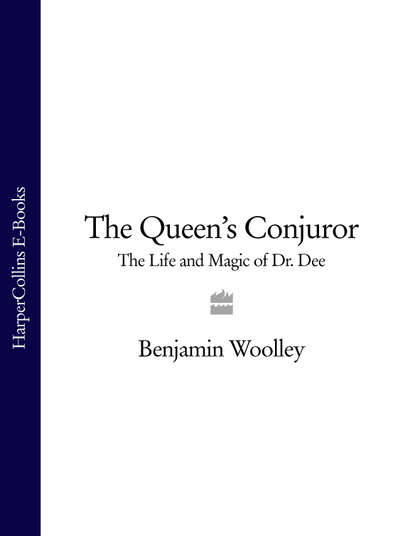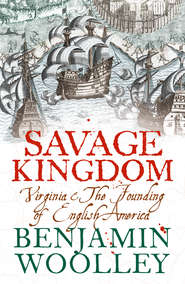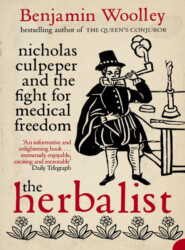По всем вопросам обращайтесь на: info@litportal.ru
(©) 2003-2024.
✖
The Queen’s Conjuror: The Life and Magic of Dr. Dee
Настройки чтения
Размер шрифта
Высота строк
Поля
(#litres_trial_promo) He died at 6pm.
As soon as Edward was dead, Northumberland attempted to install Lady Jane Grey as queen. But popular sentiment, nimble aristocratic loyalties and the law favoured Mary. Within days, she had won over most of Northumberland’s allies, including the Earl of Pembroke, who stood outside Castle Baynard, his London home, and threw a ‘cap full of angels’ (gold coins, worth around ten shillings) to the people to celebrate her accession. He also announced the annulment of his son’s marriage to Katherine Grey, which he had taken the precaution of ensuring remained unconsummated.
The speed of Northumberland’s fall was breathtaking. On 23 August, barely a month after Edward’s death, he was standing on the scaffold on Tower Hill. Stretched out beneath him was the City that had abandoned him for Mary. Nearly a tenth of its population, around ten thousand people, had gathered to watch him die. They beheld a broken man who now publicly renounced his Protestant beliefs. He was, and wanted to die Catholic. Having recanted, he was blindfolded and knelt before the block. But before the executioner could strike, the blindfold slipped and the duke had to get up to put it on again. He knelt again, his distress now obvious, and with a single blow he was beheaded.
In the days leading up to his execution, Queen Mary’s Privy Council began to purge his sympathisers. On 21 August 1553, an order was issued to the Lieutenant of the Tower of London, requesting that three prisoners be sent before the Council for examination. One of the names listed was Roland Dee.
(#litres_trial_promo)
Roland, like his son John, had prospered in recent years. Reforms such as the dissolution of the monasteries had released expanses of new land onto London’s starved property market and set off a boom that would see the City’s population nearly quadruple from fewer than 50,000 to nearly 200,000.
(#litres_trial_promo) Roland had directly benefited from this, being appointed by the King as one of two ‘packers’ with joint responsibility for checking all merchandise shipped through London and its suburbs, and the right to ‘untruss and ransack’ any consignment not packed in his presence. In return, he was to receive a ‘moiety’ (half share) of fees payable on the shipments, the other half going to the other packer, who was appointed by the Lord Mayor.
(#litres_trial_promo)
Now he was a wanted man, though there is no record of the precise charge. Given the political situation, and the fact that the Privy Council itself wanted to interview him, it seems likely he had been identified as a Protestant activist or even one of Northumberland’s conspirators. Ten days later on 1 September, he was released, a ruined man. Having nurtured a position at court, a thriving business in the City and been rewarded with lucrative privileges – having, indeed, carefully laid the foundations for promotion to the gentry, perhaps ultimately even minor nobility – he had lost everything. This misfortune was also to have a devastating impact on the fortunes of his son. By such ‘hard dealing’, Dee later wrote in a begging letter to William Cecil, his father ‘was disabled for leaving unto me due maintenance’.
(#litres_trial_promo) In other words, having confidently expected to inherit independent means that would enable him to continue his studies as he wished, Dee suddenly had to fend for himself.
But the legacy of his father’s fall was to have even wider implications. Two years later, John Dee found himself in equal, if not greater, peril.
In 1555, Mary’s supporters began to burn prominent Protestants. As the church could not execute those it convicted of heresy so, under a statute called De Heretico Comburendo, the civil authorities undertook this responsibility. In force during Henry’s reign, the statute had been abolished in 1547, part of Edward’s Protestant reforms. In January 1555 Mary’s government restored it, and within a month the fires were alight. First victim was John Rogers, former canon at St Paul’s Cathedral. He was burned at Smithfield, which was London’s meat market, as well as the venue for its grisliest executions. For over four centuries traitors, witches and heretics had been brought there and, like the cuts of meat in the butchers’ stalls, hung, roasted and boiled.
Rogers was a married priest, therefore by definition a heretic and, according to partisan Protestant accounts, denied the chance to say goodbye to his wife and children before being tied to the stake. Across the country, many more met the same fate. The numbers vary widely according to the religious sympathies of those reporting them, but are estimated at around three hundred in the five years of Mary’s reign. Later, Protestant storytellers would send shudders through their audiences with highly coloured tales of agonising death, of necklaces of gunpowder which ignited and blew off the victims’ heads or, even worse, failed to go off, as happened to John Hooper, Bishop of Gloucester, who took three-quarters of an hour to expire. According to one tale, a baby erupted from a woman’s womb while she burned, which was thrown back into the fire by the executioner.
The flames burned fiercest in Smithfield and the smoke crept through the surrounding streets, stoking up rebellion as well as fear. There were reports of a mysterious voice emanating from a wall that spoke favourable words about Mary’s half-sister the Princess Elizabeth but remained silent about the Queen. A dead cat dressed as a Catholic cleric was hung from the gibbet at Cheapside.
(#litres_trial_promo) A dagger was thrown at one priest who criticised Edward VIs reign, a ‘murderous assault’ made on another during Communion. ‘The Blessed Sacrament itself was the object of profane outrages, and street brawls arising out of religious disputes were frequent,’ one Catholic commentary later noted.
(#litres_trial_promo)
Late in May 1555, John Warne, an upholsterer living in Walbrook in the east of the City, looked up from his stitching to find the sheriffs at his door. Dragged off to Newgate prison, he was interrogated by Edmund Bonner, the ‘bloody’ Bishop of London. In Acts and Monuments of these Latter and Perillous Dayes (more popularly known as Foxe’s Book of Martyrs), compiled by the Puritan teacher John Foxe exiled in Switzerland during Mary’s reign, Bonner was named as the most diligent and heartless executor of Mary’s religious policy. Foxe summarised his view in two lines of doggerel:
This cannibal in three years space three hundred martyrs slew.
They were his food, he loved so blood, he spared none he knew.
(#litres_trial_promo)
Bonner accused Warne, presumably on the testimony of informants, of failing to attend Mass and refusing to accept tran-substantiation – the Catholic belief that during Mass bread and wine were turned into Christ’s flesh and blood. Warne was also reported to have seen ‘a great rough water-spaniel’ with its head shaved in the manner of a Catholic priest: ‘Thou didst laugh at it and like it,’ Bonner said.
(#litres_trial_promo) Apparently unmoved by such accusations, Warne refused to recant his beliefs ‘unless he were thereunto thoroughly persuaded by the holy Scriptures’. This was a robustly nonconformist response, as belief in the Bible as the sole source of divine truth and authority was central to Protestant theology.
Having been examined by Bonner for three days, Warne was handed back to the sheriffs at Newgate to await his fate. On 31 May, he was taken to Smithfield, where, according to Foxe, he was chained to the stake and burned with John Cardmaker, another former canon at St Paul’s. As the flames leapt up around them, the two held hands and together ‘passed through the fire to the blessed rest and peace among God’s holy saints and martyrs’.
(#litres_trial_promo)
The following day, the sheriffs were out again. This time the man they wanted was John Dee.
THE LORD OF MISRULE (#ulink_1bd28f42-7a52-5ee7-9987-11b7b90d5623)
… when the planets In evil mixture to disorder wander, What plagues and what portents, what mutiny, What raging of the sea, shaking of earth, Commotion in the winds! Frights, changes, horrors, Divert and crack, rend and deracinate, The unity and married calm of states Quite from their fixture!
WILLIAM SHAKESPEARE,
TROILUS AND CRESSIDA
V (#ulink_f06b7f90-5038-5aea-89c6-f84809399584)
On 28 May 1555 the Privy Council despatched a letter ordering Francis Englefeld, Mary’s Master of the Court of Wards, ‘to make search for one John Dee, dwelling in London, and to apprehend him and send him hither.’
(#litres_trial_promo) His house was to be sealed, and his books and papers seized as evidence. His living from Upton-upon-Severn was also confiscated, depriving him of his only regular source of income.
By 1 June Dee was in the custody of Sir Richard Morgan, Chief Justice of the Common Pleas. He was taken to Hampton Court, to be held incommunicado ‘until Mr Secretary Bourne and Mr Englefelde shall repair thither for his further examination’.
(#litres_trial_promo)
This can hardly have come as a complete surprise. Many of Dee’s closest friends had already been arrested or forced into exile. Following an audience with Princess Elizabeth, Sir William Pickering had escaped back to the Continent, and been indicted for treason in his absence. John Day, a prominent printer who later published many of Dee’s works, had been imprisoned and, on release, also went abroad. The arrest of his own father must have further thickened the atmosphere of apprehension, casting suspicion on the whole family.
Dee was arrested with several others: one Butler, whose identity remains unknown; Christopher Cary, a pupil of Dee’s;
(#litres_trial_promo) John Field, a publisher and astronomer who was soon to collaborate with Dee on the printing of a set of ephemerides drawn up according to the heretical Copernican principles; and Sir Thomas Benger, by far the group’s most senior member, who later became auditor to Queen Elizabeth and was now one of her ‘principal servants at Woodstock’, as Dee put it.
(#litres_trial_promo) This list is a telling one. It suggests Dee was identified as a member of a secret Protestant cell Mary’s government believed to be clustered around Elizabeth. A week later Elizabeth herself was brought to Hampton Court, where Mary, now married to Charles V’s son Philip, approached the term of what turned out to be a phantom pregnancy. Mary was under pressure from her advisors to dispose of Elizabeth, whose very existence was seen as a threat to the English re-establishment of Catholicism. There were repeated attempts to implicate the princess in Protestant schemes and plots. In Mary’s private chambers, the sisters had a tearful confrontation, apparently (according to Elizabeth) within the hearing of Philip, hiding in a suitably Shakespearean manner behind an arras. Mary demanded that Elizabeth reject her Protestant beliefs, and she refused once more.
The many accusations against Dee focussed not on his religious leanings so much as his links with mathematics and magic. ‘In those dark times,’ John Aubrey later wrote, ‘astrologer, mathematician and conjuror were accounted the same things.’
(#litres_trial_promo) This was certainly the case with Dee. He was charged with ‘calculating’, ‘conjuring’ and ‘witchcraft’ on the grounds that he had drawn up horoscopes for Mary, her husband Philip and Elizabeth.
He was probably guilty as charged. The remnant of his diary for this period includes an entry (inaccurately transcribed by Ashmole) showing the date and time of Mary’s marriage to Philip, and noting that the rising sign at the moment of their wedding – 11am, 25 July 1554 – was Libra (a good omen, as Libra, ruled by Venus, was the sign associated with marriage or partnership).
The only other entry from his diary for this period, dated three weeks prior to his arrest, simply reads ‘Books brought from France to London’. Although it appears innocent enough, it may disguise an attempt to communicate with the exiled Pickering, one of Elizabeth’s partisans and a potential traitor. Dee may even have been acting as an intermediary between Pickering and Elizabeth because he was also in correspondence with the princess at this time.
Whether there were grounds for such suspicions or not, the merest whiff of intrigue was sufficient to have prompted the Council’s decision to arrest Dee, but if they were to keep him imprisoned, they would need something stronger than the suggestion he had been drawing up royal horoscopes.
A more serious accusation was duly found, and the very nature of its source hints at the political nature of the proceedings. Two informers were now cited who claimed to have evidence that Dee had ‘endeavoured by enchantments to destroy Queen Mary’. One of them was subsequently identified by Dee as ‘Prideaux’. A Catholic spy of that name later fled to Spain, seeking the protection of King Philip.
(#litres_trial_promo)
The other informer was a rather more conspicuous character called George Ferrers, a lawyer, member of Lincoln’s Inn, MP and convicted debtor.
(#litres_trial_promo) In 1553 he was appointed London’s ‘Lord of Misrule’, an ancient role bestowed during yuletide revelries. This tradition had been revived by the Duke of Northumberland for Edward’s last Christmas and it had been a huge success. Decked in satin robes, Ferrers fulfilled his duties admirably, presiding over a court of fools and illusionists. He repeated the part during Mary’s reign, though no doubt the ‘merry disports’ that formed part of the event did not include jesters dressed as cardinals, as in the inaugural year. Ferrers now accused Dee of using ‘enchantments’ to blind one of his children, and to kill another.
Ferrers apparently bore Dee a longstanding grudge. In 1578 a suppressed edition of a pamphlet entitled Mirror for Magistrates included a story he wrote apparently lampooning Dee. It described a sorcerer hired by one Elianor Cobham to kill the Queen by sticking pins through a wax effigy of her. The story had a particular resonance at the time, as just such an effigy of Elizabeth had been found (at Lincoln’s Inn Fields, where Ferrers practised as a lawyer), and Dee had been asked by the Privy Council to advise upon its significance.
(#litres_trial_promo)
On 5 June, Dee, together with Cary, Benger and Field, was brought before the Secretary of State Sir John Bourne, Francis Englefeld, Sir Richard Read and Doctor Thomas Hughes to be examined on his ‘lewd and vain practises of cal-culing and conjuring’.







